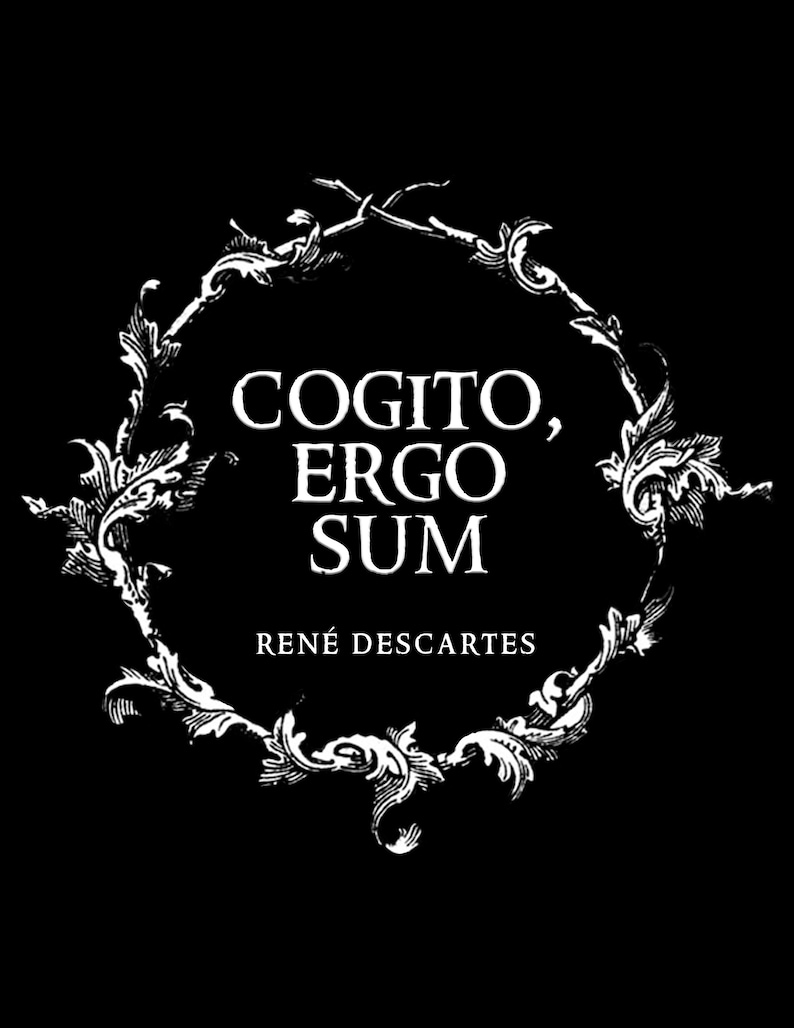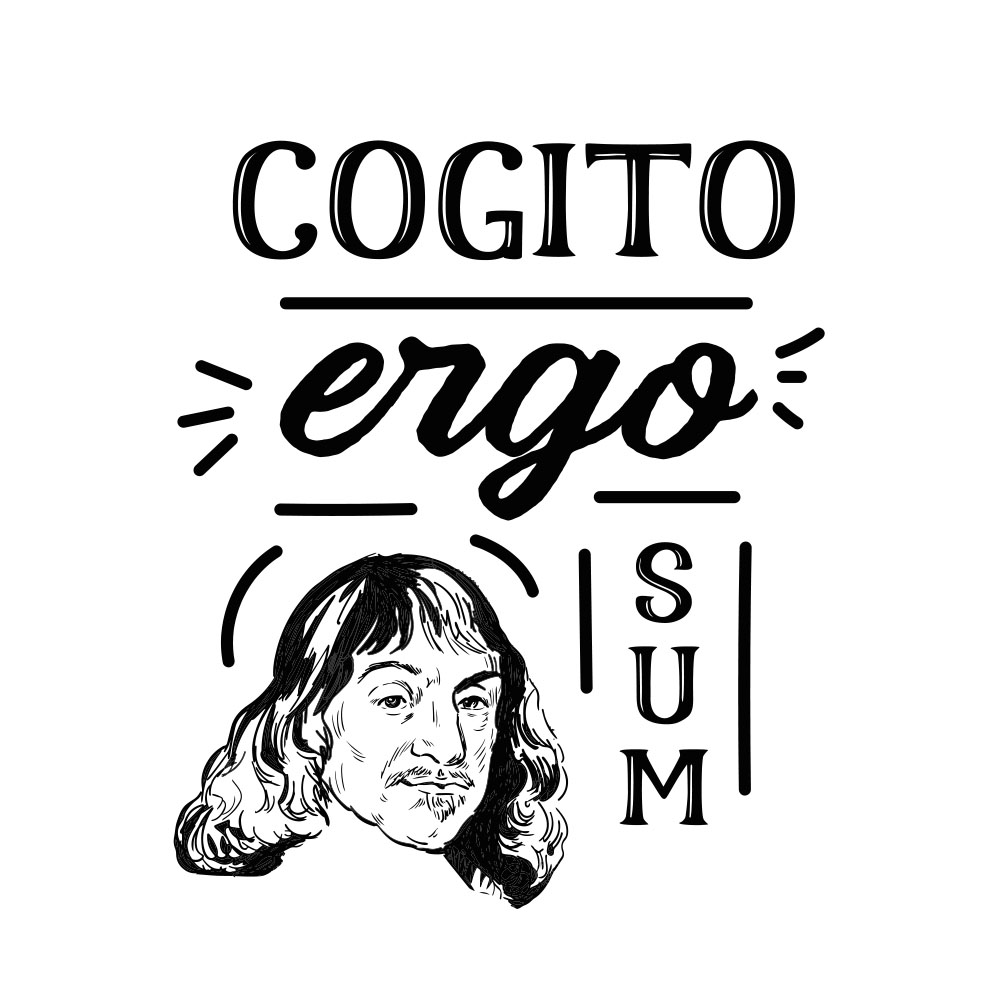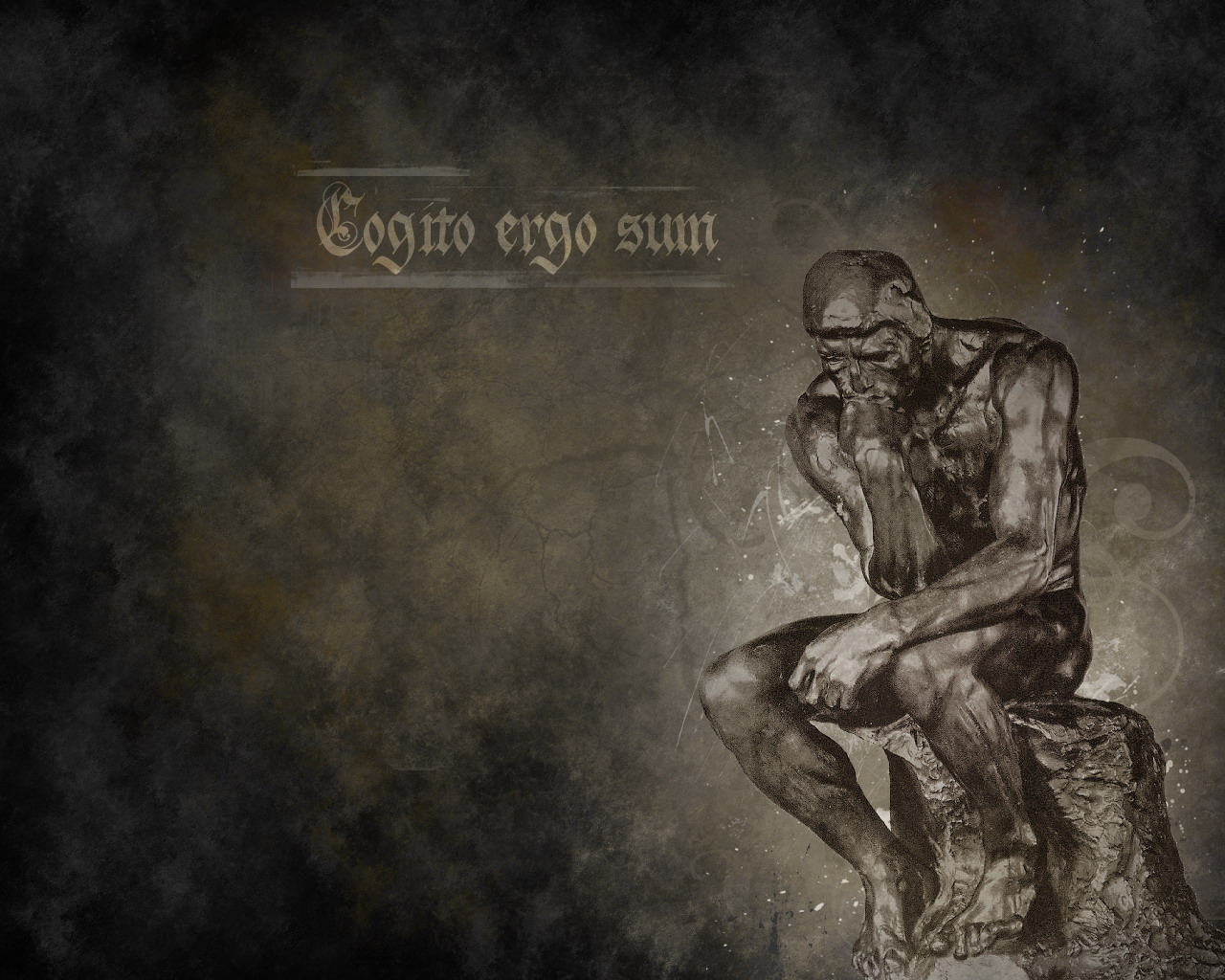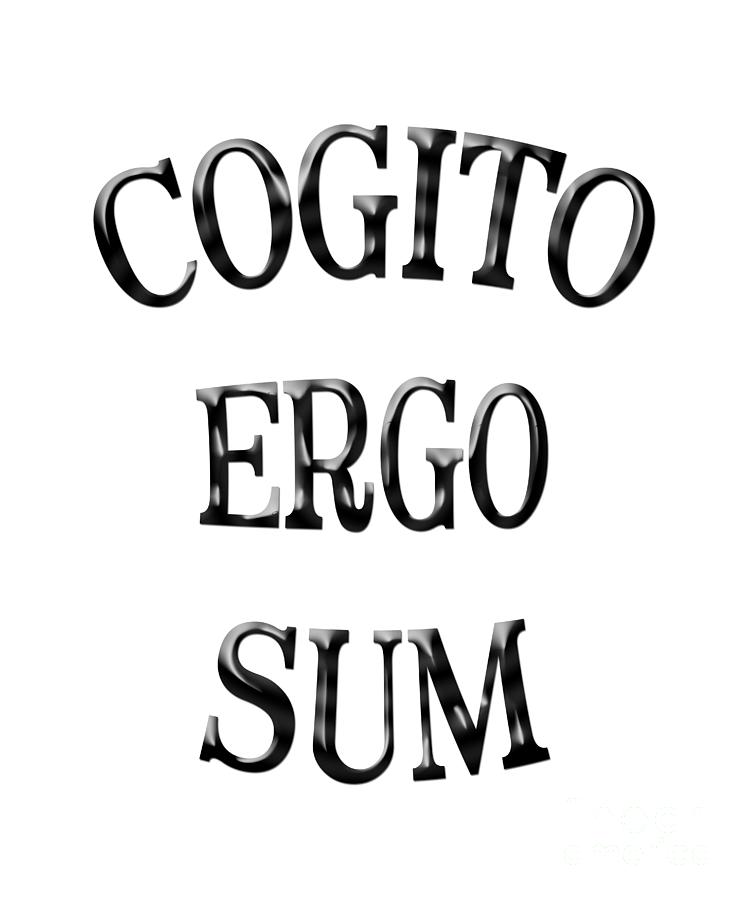
PPT “Cogito Ergo Sum” PowerPoint Presentation, free download ID3113503
The Latin cogito, ergo sum, usually translated into English as " I think, therefore I am ", [a] is the "first principle" of René Descartes 's philosophy. He originally published it in French as je pense, donc je suis in his 1637 Discourse on the Method, so as to reach a wider audience than Latin would have allowed. [1]

Fridge René Descartes, Cogito, Ergo, Sum
This is where "cogito ergo sum" starts to come in - we can doubt many things, but we cannot doubt that we think. After all, even doubting is a kind of thinking. "Cogito ergo sum" is, for this reason, a fundamental element of Descartes' philosophical method. This method aimed to establish a firm and indubitable foundation for knowledge.

Cogito Ergo Sum I think therefore I am Nerd Latin
Principles of Philosophy In the 1620's, René Descartes worked on a metaphysical piece on the existence of God, nature, and soul as well as tried to explain the set of parhelia in Rome. He combined both in the work Treatise on the World, which consisted of three parts. Only two of these, The Treatise of Light and the Treastise of Man survived.

Cogito Ergo Sum Quote René Descartes Literary Poster / Etsy
This disposes of the evidence supposed to support the denial that the cogito is an inference.19 Hintikka thinks that Gassendi's argument that we can also say that ambulo ergo sum is as "good an inference"20 as cogito, ergo sum makes the interpreta- tion of Descartes's cogito as an inference suspect. I do not see that this is so.

"Cogito Ergo Sum " Sticker by Taddmax Redbubble
Cogito ergo. Sum. Descartes and Hume share at least one fundamental philosophical belief, and that is the proper mindset required in order to begin philosophizing in an orderly manner. Each holds that, once this mindset is achieved, the reader will readily accept the procedures and conclusions that follow.

Cogito Ergo Sum tshirtgeek
cogito, ergo sum, (Latin: "I think, therefore I am) dictum coined by the French mathematician and philosopher René Descartes in his Discourse on Method (1637) as a first step in demonstrating the attainability of certain knowledge. It is the only statement to survive the test of his methodic doubt.

Cogito Ergo Sum TShirt The Partially Examined Life Philosophy Podcast
You may copy it, give it away or re-use it under the terms of the Project Gutenberg License included with this eBook or online at www.gutenberg.org Title: Cogito, Ergo Sum Author: John Foster West Release Date: June 17, 2009 [EBook #29149] Language: English Character set encoding: ISO-8859-1 *** START OF THIS PROJECT GUTENBERG EBOOK COGITO.

Cogito ergo sum cosa significa e chi lo ha detto? Studenti.it
cogito, ergo sum]—is the first and most certain of all to occur to anyone who philosophizes in an orderly way. 2. 2. The special status of cogito-type beliefs or claims. Some epistemological concepts: 3. i. Indubitable: A person S's belief that p is indubitable if and only if S cannot doubt p. ii. Self-verifying: If S asserts p, then p is.

Cogito ergo sum Kura Harabura
" Cogito, ergo sum " (Latin: "I am thinking, therefore I exist," or traditionally "I think, therefore I am") is a philosophical phrase by René Descartes, and it is a translation of Descartes' original French statement: " Je pense, donc je suis, " which occurs in his Discourse on Method (1637).

Pin su Quotes
Cogito Ergo Sum from ENTRIES Published online by Cambridge University Press: 05 January 2016 By Lex Newman Edited by Lawrence Nolan Chapter Get access Cite Summary "I think, therefore I am" is the popularized formulation of Descartes' famous cogito ergo sum (hereafter, " cogito ").

Cogito ergo sum...
Modern philosophy was born into distinct self-consciousness in Bacon and Descartes: Bacon, the founder of empiricism or empirism, and Descartes, the founder of rationalism. The current chapter discusses modern philosophy including Descartes' statement: "Cogito, ergo sum" ("I think, therefore, I am").

Cogito Ergo Sum by Mrakoslava on DeviantArt
Sum, ergo cogito: cogito, ergo sum" (GS 223). Ironically, Nietzsche inverts the logic in Descartes' famous statement "Cogito, ergo sum" as a caustic way, yet poetic and stylish, of creating his own statement.1 He then delivers his critique by putting his own version prior to that of Descartes.

Wall sticker Cogito Ergo Sum
Semen Frank (1877-1950) was one of the first and most ardent advocates of the ontological argument in the twentieth century. He proposed an original interpretation of the ontological argument based on its analogy to Descartes' Cogito. Frank believed that it is possible to develop Cogito ergo sum into Cogito ergo est ens absolutum. In this paper, I analyze his version of the ontological.

PPT “Cogito Ergo Sum” PowerPoint Presentation, free download ID3113503
Cogito, Ergo Sum: The Life of René Descartes. Richard Watson. David R. Godine Publisher, 2007 - Filosofie - 375 pages. Rene Descartes was a highly influential philosopher, mathematician, and scientist and is regarded as the Father of modern philosophy and mathematics. This is the biography of Descartes, and it describes the life of Descartes.

Cogito Ergo Sum by Rene Descartes Digital Art by Arkitekta Art
By Jack Maden | October 2023 9-MIN BREAK P erhaps Western philosophy's most famous statement, "I think, therefore I am" is actually a rather confusing translation of its Latin original, cogito ergo sum. A clearer translation might be, "I am thinking, therefore I exist."

Cogito ergo sum il significato della frase di Cartesio in cinque punti Cinque cose belle
The Cogito and Doubt 4.1 Cogito Ergo Sum. Famously, Descartes puts forward a very simple candidate as (what CSM translate as being) the "first item of knowledge [cognition]" (Med. 3, AT 7:35, CSM 2:24). The candidate is suggested by methodical doubt - by the very effort at thinking all my thoughts might be mistaken. Early in the Second.